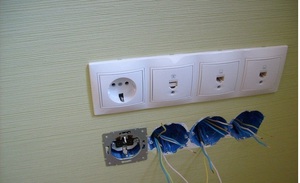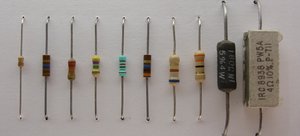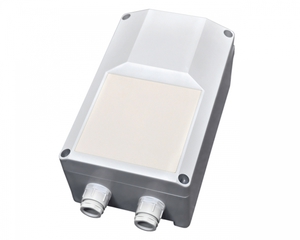Cable cross section calculator for power and length: formulas and tables
Electrical wiring is one of the most important parts of a large communication system, supplying the house with electricity. The quality of work of lamps and electric household appliances depends on long and qualitative operation of electric wiring, which today is becoming more and more in every home. Therefore, more and more often you can find questions in construction forums, concerning the problem of wiring. And one of those frequent questions, how to correctly calculate the cross section of the cable in length and power, that is, on its load.
Professional electricians "by eye" determine approximately this figure. Engineers use special spreadsheets or an online calculator. But we will reason wisely. A certain amount of electrical appliances is installed in any house, and these devices have different power. It, Firstly. Second - the number of office space or rooms in the house can vary greatly in any building. And this will affect the power consumption of lighting. At the same time, some people have multi-horned chandeliers in the house, and some do without spot lighting. Plus a variety of different lamps.
Third, it is again the power of household appliances, which is calculated from actual data. As it were, practically considered on the fingers, what electrical appliances and with what power homeowners use. And most importantly, that there is no need when calculating the total power, take into account the factor, which affects, how lighting or electrical appliances work: periodically or constantly. It is necessary to determine the total power per cable.
The formula for calculating the power of the cable cross section
so, there is a formula for calculating the cross-sectional power of an electric wire or cable. Here she is:
I = PхK / Uхcos? - this formula is used for single-phase AC networks with alternating current 220 Volt. where:
-
K is the coefficient of simultaneity, it equates the power indicator with the time value. After all, we do not use electrical appliances or lighting all the time. This is a constant value and it is equal to 0.75.
- P is the total power of all lighting and household appliances.
- U - alternating current 220 Volt.
- cos? - This is also a constant indicator, which is equal to one.
In this formula, almost all values, in addition to total capacity, permanent. Therefore, the calculation is based on those loads, which have lamps and household appliances. That is, the amount of current will depend on the power used. These indicators, usually, specified in the technical passport, which is included with the appliance. Manufacturers also often indicate it on labels. But here are just some indicators of the power of basic electrical appliances, used more often than others.
List of power appliances and an example of cable calculation
Power of some electrical appliances:
- Refrigerator 350-850 Watt.
- TV 150-310 Watt. This is the power of modern TVs.
- Lighting 320-1600 Watt. As mentioned above, it depends on the type and number of lamps.
- Iron 1200-2200 Watt. This is one of the most energy consuming devices.
- This category includes an electric kettle: 1200-2600 Watt.
- Add to the same category dishwasher and washing machine - 2600 Watt.
- Computer 320-650 Watt.
- Microwave approx 1500 Watt.
Other electrical appliances could be added to this list, example, music center, hair dryer, water heater, vacuum cleaner, etc.. D. That is, to calculate the cross section of the cable by power must first be determined, how many appliances are in the house. Summing up their power, the total power consumption is determined, which affects the wiring.
so, all data are substituted into the formula, to determine the current strength. Let's calculate the power of all the above appliances at a minimum. And let's find out, which cable we will need. The total capacity is - 6550 Watt or 6,55 kw. Substitute it into the formula:
I = 6550х0.75 / 220 = 22,4 Ampere.
Then, to determine the cable cross section, we will need a table, where the ratio of two quantities is given.
Importantly! The magnitude of the electric current in the tables, usually, indicated in whole numbers. Therefore, we need to round our result to the largest value. This will give some margin of safety. In our example it will be 27 Amperes on copper cables, and 28 Amperes on aluminum. So, the cross section of the wire will be 2,6 mm. sq. on copper and 4.1 mm. sq. for aluminum.
So, you learned, how to calculate wire cross section.
Calculation of the cross section of the wires in the rooms
The calculation described above with the formula is used for the input wire to the house. But you need to consider the internal layout of the premises and rooms. Just with the lighting everything is more or less clear. Throw under it in all rooms a wire by section 1,6 mm. sq., and don't worry, that you all did the right thing. No short circuit, no overheating, you will not happen.
Everything is much more complicated with sockets. There are rooms in the house, in which the presence of household appliances is outrageous. This is a bathroom and kitchen. In the first, usually, washing machine and hair dryer usually work. By the way, it has quite a lot of power 1200-2600 Watt. Therefore, the load of such a small device creates a fairly high.
Therefore, it is necessary to solve one very important task - to properly distribute the power of the socket groups along the length. Example, in the kitchen. First, the current is calculated according to the formula described above, where the role of consumption capacity is the capacity of all, who is in the kitchen of household electrical appliances, not forgetting about lighting. The choice of wire cross section is made, which will suit this room. And here on sockets to stretch wiring under all household appliances with smaller section. For kettle and coffee maker separately, for the refrigerator separately, for dishwasher separately. And to every point.
Some may say, not too many outlets for one small room? There is an alternative, connect to the socket unit (triple or double) wire of larger cross section. You will need to make another calculation. So, There can be many ways for the wiring diagram. But in any case you will need to use tables, calculator and formula for determining the cross section of the cable by power, and lengthwise. Although experts say, that the best option is a separate socket for each appliance.
And another important point, concerning the length of the wire and its current loss. According to the laws of physics, than a longer cable, the greater the voltage loss. Therefore, electricians calculate the cross section of the cable along its length. However, the internal wiring is not calculated. Very, minimal losses.
Which cable to choose: aluminum or copper?
Let's not delve into this issue. Let's just do a brief comparative analysis.
-
Although copper is prone to oxidation, but not so actively, like aluminum. Therefore, the contacts last longer.
- Copper wire is more flexible and durable. With frequent bending, it will not break.
- Aluminum cable is almost five times cheaper than copper.
- The degree of conductivity of copper wires is almost twice as high, than aluminum. That is, and higher power, which copper wire can withstand.
There are modern rules for wiring. And in them it is recommended to do internal wiring with a copper cable, and the outer aluminum.
So, summing up all the above, it is possible to draw a conclusion, that the calculation of the power of electrical appliances and the cross section of the wire on the load is a responsible and very important process. An error in the calculations can be very costly. Therefore, attention and accuracy are needed here.



